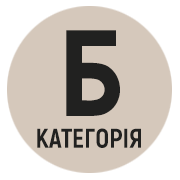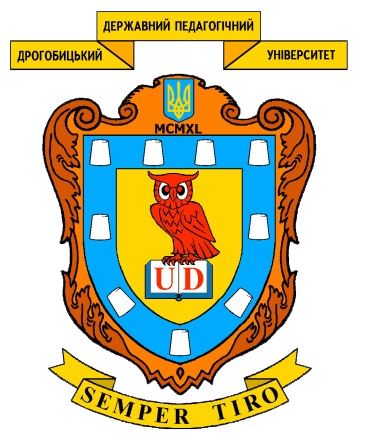«ЧОМУ АКАДЕМІЯ?»: БІЛЯ ВИТОКІВ АКАДЕМІЇ ПЛАТОНА (ДО 100-РІЧЧЯ НАЦІОНАЛЬНОЇ АКАДЕМІЇ НАУК УКРАЇНИ)
DOI:
https://doi.org/10.24919/2312-2595.40.126348Ключові слова:
Академія, Платон, σχολή, παιδεία, διατριβή, καλοκαγαθία, НАН УкраїниАнотація
У статті розглянуте питання щодо причин вибору місця для школи Платона. Академія була сакральним, соціально значущим простором в афінському полісі, діатрибою, достойною справжнього громадянина, осередком інтелектуального, політичного, релігійного життя. Юний Платон приходив сюди, шукаючи себе в різних сферах. Він покине Академію, зустрівши Сократа, але знову повернеться до неї після страти вчителя і років мандрування Елладою.
Посилання
Diogen Laertskiy. (1986). O zhizni, ucheniyakh i izrecheniyakh znamenitykh filosofov [Lives and Opinions of Eminent Philosophers]. Moscow: «Mysl» [in Russian].
Kolobova, K.M. (1961). Drevnii gorod Afiny i ego pamiatniki. [The Ancient City Athens and its Monuments]. Leningrad: «LSU Publishing House» [in Russian].
Losev, A.F. (1981). Diogen Laertsii – istorik antichnoi filosofii. [Diogenes Laërtius – Historian of Ancient Philosophy]. Moscow: «Nauka» [in Russian].
Marinovich, L.P. (1962). Arkheologicheskie otkrytiia v Gretcii v 1960 – 1961 gg. [Archaeological Discoveries in Greece in 1960 – 1961]. Vestnik drevnei istorii – Journal of Ancient History, 4, 137–156 [in Russian].
Marru, H.I. (1998). Istoriia vospitaniia v antichnosti [Histoire de l'éducation dans l'antiquité]. (Trans. from French). Moscow: «Greko-latinskii kabinet» Iu.A. Shichalina [in Russian].
Ieger, V. (1997). Paideia. Vospitanie antichnogo greka [die Formung des griechischen Menschen]. (M.N. Botvinnik, Trans.). Moscow: «Greko-latinskii kabinet» Iu.A. Shichalina [in Russian].
Skovoroda, H. (1973). Povne zibrannia tvoriv [A complete collection of works] (Vols. 1–2). Kyiv: «Naukova dumka» = Retrieved from http://litopys.org.ua/skovoroda/skov221.htm [in Ukrainian].
Stavniuk, V. (2005). Stanovlennia afinskoho polisa [The Genesis of the Athenian Polis]. Kyiv: «Akvilon-Plus» [in Ukrainian].
Stavniuk, V. (2015). «ХХІ stolittia, popry informatsiinist, skhylnist do praktychnykh, prykladnykh nauk, bude humanitarnym» [«The twenty-first century, despite the informational, the propensity for practical, applied sciences, will be humanitarian»]. Ukrainskyi tyzhden – The Ukrainian Week, 49 (421) [in Ukrainian].
Shichalin, Iu.A. Platon. Moscow: «Greko-latinskii kabinet» Iu.A. Shichalina. Retrieved from http://www.mgl.ru/library/24/Platon-Shichalin.html [in Russian].
Beazley, J.D. (1956). Attic Black-figure Vase-painters. Oxford: Clarendon Press [in English].
Breucker, G. De. (2012). Alexander Polyhistor and the Babyloniaca of Berossos. Bulletin of the Institute of classical studies, 55, 57–68 [in English].
Caruso, A. (2013). Akademia. Archeologia di una scuola filosofica ad Atene Platone a Proclo (387 a.C. – 485 d.C.). SATAA: Studi di Archeologia e di Topografia di Atene e dell’Attica (Vol. 6) [in Italian].
Delorme, J. (1960). Gymnasion: étude sur les monuments consacrés a l'éducation en Grèce (des origines à l'empire romain). (Thèse). Paris: E. de Boccard [in French].
Delvoye, Ch. (1960). Jean Delorme, Gymnasion. Étude sur les monuments consacrés à l'éducation en Grèce (des origines à l'Empire romain) [compte-rendu]. L'Antiquité Classique, 29, 2, 580–583 = Retrieved from www.persee.fr/doc/antiq_0770-2817_1960_num_29_2_3490_t1_0580_0000_2 [in French].
Ginouvès, R. (1964) Jean Delorme, Gymnasion. Étude sur les monuments consacrés à l'éducation en Grèce, 1960. Revue des Études Anciennes, 1–2, 66, 229–232 = Retrieved from http://www.persee.fr/doc/rea_0035-2004_1964_num_66_1_3720_t1_0229_0000_ [in French].
Glucker, J. (n.d.). Plato in the Academy: Some Cautious Reflections. Retrieved from http://hdl.handle.net/10795/3535 [in English].
Henner, H. von. (1995). Das griechische Gymnasion im 2. Jh. V. Chr. In M. Wörrle, P. Zanker (Hgg.), Stadtbild und Bürgerbild im Hellenismus (Vestigia 47). München [in German].
Héctor Felipe Pastor Andrés. (2015). Léxico agonístico de los oradores áticos. (Tesis doctoral). Universidad de Granada. Retrieved from http://hdl.handle.net/10481/41151 [in Spanish].
Mariat, L. (2013). La figure d'un Socrate cynique: perspectives archéologiques à partir des Caractères de La Bruyère. Université Stendhal, Grenoble 3. Retrieved from https://dumas.ccsd.cnrs.fr/dumas-00842290/document [in French].
Mango, E. (2004). Bankette im hellenistischen Gymnasion. In P. Scholz, D. Kah (Eds.), Das Hellenistische Gymnasion (pp. 273–312). De Gruyter [in German].
Lynch, J.P. (1984). Hipparcho’s Wall in the Academy at Athens: a closer look at the tradition. Studies Presented to Sterling Dow, Greek, Roman and Byzantine Monograph, 10, 173–179 [in English].
Riginos, A.S. (1976). Platonica: the anecdotes concerning the life and writings of Plato. Leiden [in English].
Schmitt, P.P. (1992). La cité au banquet. Histoire des repas publics dans les cités grecques (pp. 5–585). Rome: École Française de Rome = Retrieved from http://www.persee.fr/doc/efr_0000-0000_1992_ths_157_1 [in French].
Szlezák, Th.A. (Tübingen). (n.d.). Academy. Brill’s New Pauly. Edited by H. Cancik, H. Schneider, English Edition by: Christine F. Salazar, Classical Tradition volumes edited by: M. Landfester, and English Edition by: Francis G. Gentry. doi: http://dx.doi.org/10.1163/1574-9347_bnp_e111350 [in English].
Scholz, P., Kah, D. (Eds.). (2004). Einführung. Das Hellenistische Gymnasion (pp. 11–24). De Gruyter [in German].
Wecowski, M. (2014). The Rise of the Greek Aristocratic Banquet. Oxford; New York: Oxford University Press [in English].
Ακαδημια Πλατωνος. (2015). Αθήνα. Retrieved from https:// www.culture.gr/DocLib/filladio_akplaton.pdf [in Greek].
##submission.downloads##
Опубліковано
Номер
Розділ
Ліцензія
Авторське право (c) 2018 Проблеми гуманітарних наук. Серія Історія

Ця робота ліцензується відповідно до Creative Commons Attribution-NonCommercial-ShareAlike 4.0 International License.








